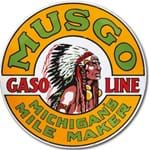
Venetian school oil of a honey and beeswax seller, thought to date from as early as 1620 – £28,000 at Sloane Street Auctions.
Much rarer are images of the exotic East painted by Europeans in earlier centuries.
The sale at Sloane Street Auctions in London on September 28 included a Venetian School oil thought to have been painted in the eastern Mediterranean or north Africa as early as 1620.
It thus predates the work of the Flemish-French painter Jean Baptiste Vanmour (1671-1737) by around 100 years. Vanmour has been considered, until the emergence of this painting, to be the earliest and most refined recorder of Ottoman secular life.
The everyday scene depicts a honey and beeswax seller plying his wares from a blue and white striped tent erected close to a city gate. The merchant sits on a colourful flatweave carpet, his bookkeeper turned away from the viewer, while three black slaves (one hooded) are charged with carrying the heavy skeps (baskets).
Honey was produced in huge quantities across the Ottoman empire for use as a sweetener, a preservative and as a natural antiseptic. The source of significant tax revenue, it was – although war intermittently interrupted the relationship – also a valuable trading commodity.
At the time this scene was painted (perhaps from life) by an itinerant artist, Venetians were still the largest foreign community in Istanbul and the Ottoman Empire’s most important international trading partner.
The 2ft 6in x 3ft 4in (77cm x 1.03m) oil had condition on its side. Still on an unlined canvas, it was offered with a guide of £20,000-30,000 and did not disappoint, selling at £28,000 (plus buyer’s premium).














